Warning! This post is about poop. If you can’t handle that, quit reading! Better yet, why not just quit pooping? I mean, if we are ashamed of something, shouldn’t we just stop doing it?
Poop is a natural part of life. We should all face our poop problems openly. If you are ready to do that, read on for an intimate portrait of our broken relationship with poop. Then learn how to heal your relationship with poop using humor and humanure!
The Morning (Bowel) Movement
You wake up and have your coffee, tea, kombucha, yogurt, kefir, kimchi, or whatever it is that gets you going in the morning. Then, a little while later, you grab a book or magazine and have a long, contemplative moment of meditation in the bathroom.
If you have kids (or 4 cats), that might be the only time you get to be alone all day. Maybe you flip on the exhaust fan, or open the window, to keep things pleasant. You linger longer than is strictly necessary to do your business.
Once relieved of your load, ready to get on with your day, you flush. With a whirl of water, all the visible evidence of your body’s digestive success goes rushing down the drain. On some level, this is gratifying. It’s gone, and you don’t have to think about it anymore.
Somewhere deep down inside you, though, some little inkling of guilt lingers. The ease—the irresponsibility—of sending that stinky stuff off for someone else to deal with doesn’t sit as well as it used to.
The feeling grows stronger until finally, you can’t stand it any more. You can’t just flush your life down the toilet anymore. You have to take responsibility for your own crap!
Poop Is Life
Poop is life (whether you see it that way or not). It’s full of remnants of all the once-living stuff you put into your body to feed the various bacteria and nutrient-absorption processes that keep you alive.
Poop is your healthy digestion made manifest in solid stool. It’s also your contribution to the biological food chain that keeps soil nutrient-rich.
When poop leaves your body, it can become the life force for tons of other life forms. They will find sustenance in all the partially digested parts your personal biota prepared for them.
Eventually, if your poop gets lucky, it will be returned to the earth as humus. (As in beautiful, black garden gold that grows great big plants—not pita spread!) There it will nourish plants, animals, and endless other life-forms that sustain our ecosystems.
It will nourish you, too, if you grow your own food.
Poor, Unlucky Poop
Or . . . your poor, unlucky poop will just get flushed. It will end up in sewers and mixed with all sorts of toxic s**t. After resource-intensive processing, it will be incinerated or dumped in the landfill.
It may also end up as biosolids and used on farm fields. But now it’s been mixed with all that medical waste, chemical residue, road pollution, and more. So, instead of being the black garden gold it could have been, it becomes a potential black death—as in a plague on our environment and our health.
Now all biosolids are not created equally. So, some might not be the cow killing, food supply contaminating nightmare biosludge we’ve heard about.
No matter how you look at it though, even if we manage to get the nasty stuff back out of biosolids before they get spread on food-growing fields, we still took the long way around.
Wasted Opportunities
When you flush—it’s that moment that your poop becomes “waste.”If you refuse the bounty of a beautiful system of self-renewal and transformation by sending your bodily byproducts off for others to deal with, you become “wasteful”.
Doesn’t it strike you as odd that when we are filled with joy, we are joyful. Yet, when we empty our bowels and flush away that goodness, we become wasteful? I don’t want to get too metaphysical here, but I think that’s pretty accurate.
Natural systems have no waste. Everything gets used by something else to create a self-renewing nutrient cycle. When we break our relationship with nature, we open the door for our lives to become full of the consequences of our waste.
Things like pollution start to pile up all around us. Our environment suffers, our health suffers, and our relationship with our natural world suffers.
For all of my life, I have been wasting my poop. And I do feel full of waste as a result. I can see the consequences of wastefulness in my environment and life. I know I need to change my broken relationship with poop.
Why Not Use Your Manure in Your Garden?
Despite my wasteful past, there is hope for me (and you, if you are also wasteful). We can start by making peace with our poop. First, we have to overcome our fecaphobia—as in, our fear of using human manure in agriculture.
You compost your chicken poop, right? You happily use that in your annual vegetable garden. You let your ducks run free around your perennial trees to poop and fertilize those plants for you. Your goat, rabbit, or worm poop powers your plants, too.
Why not your poop?
You know what you put into your body. You’re not loaded up on pharmaceuticals and antibiotics. You eat a healthy diet with pasture-raised meats and lots of vegetables.
Read More: “15 Natural Antibiotic Alternatives”
As humanure expert Joseph Jenkins writes:
It is well known that humanure contains the potential to harbor disease-causing microorganisms or pathogens. This potential is directly related to the state of health of the population which is producing the excrement. If a family is composting its own humanure, for example, and it is a healthy family, the danger in the production and use of the compost will be very low. If one is composting the humanure from orphanages in Haiti where intestinal parasites are endemic, then extra precautions must be taken to ensure maximum pathogen death.
In other words, good stuff in, good stuff out. If you are living a healthy life, growing your own food, or buying from farmers you trust, then you know the stuff coming out the other end is as healthy for composting as what comes from your livestock.
So, why on earth wouldn’t you use it like you do the manure from livestock?
Now, I am not saying you should direct apply this stuff. Just like all those other manures you use, it requires composting and aging to eliminate potential risks. (You know . . . just in case you had a moment of weakness, hit a fast food chain, and ate something questionable.)
Humanure
Overcoming fecaphobia and closing the human nutrient cycle in our own food supply is critically important if we really want to grow food sustainably. And it’s not even that hard to do.
Making humanure that is safe to apply on your garden requires 3 basic things:
- A Collection Method
- A Manure-Safe Composting System
- A Commitment to Keep Going
If you are already safely composting other kinds of manure, then you are probably ready to compost your own manure, too. If not, then study up on proper composting techniques before you start adding your own poop to your piles.
If this is your first time considering making humanure, I highly recommend you get yourself a copy of this book: “The Humanure Handbook” by Joseph Jenkins.
You can view or download the entire book for free online. Or you can buy a bound copy.
Note: Similar to The Grow Network (TGN), Joseph Jenkins gives away a huge amount of information for free to help create a better world. However, to keep doing this work, he also offers products for sale. So, if you find the information useful (Joseph’s or TGN’s), please support the work with purchases!
Collection Method
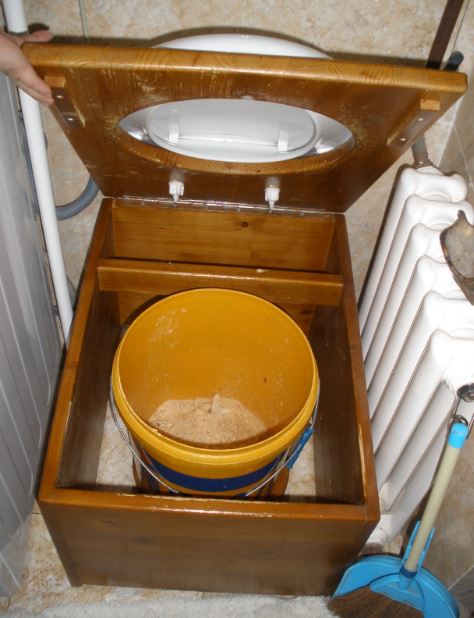
Image via Wikimedia
Personally, I am starting simple. I plan to use a 5 gallon bucket with a toil seat lid to collect my poop. You can make your own. Or, just buy a camping toilet for under $20 to use for this purpose. I’ll also keep another bucket full of partially rotted leaf, hardwood, or sawdust.
Basically, after you go, you take a scoop of your partially rotted material and cover your fresh poop. This cuts smells, activates the microorganisms that will compost your poop, and makes opening your toilet seat more aesthetically pleasing.
When your bucket is full, you carry it to your compost pile, dig a divot in the center, and dump your bucket into the divot. Then you use some water to rinse your bucket and dump that water over your compost pile.
My Humanure Bucket List
- A 5-gallon bucket for rotted stuff
- A 5-gallon camping toilet
- Biodegradeable Toilet Paper*
*Want to make smart decisions about your tissue products? Check out this PDF from the National Resources Defense Council: “A Shopper’s Guide to Home Tissue Products.”
Manure-Safe Compost System
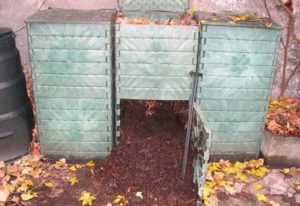
Image via Wikimedia
Like all compost piles, this one needs to be kept well away from water sources. Don’t site it near your well, for example! Your compost needs a cover, too. That way you don’t have rain passing through the pile, soaking into the soil below before this stuff is composted.
It needs to be secure so critters don’t dine on the contents. My Great Pyrenees pup is notorious for eating poop, so I plan to keep this safe from her! Roving rats, raccoons, and other critters could also be an issue.
Then, you need to keep building your pile. Adding kitchen scraps and incorporating other sources of greens and browns with your poop is important to make a sufficiently large pile to get good, safe results.
Aging is critical. Most parasites and pathogens only have a limited survival period outside a suitable host (e.g., a human body). Aging prevents risk of repeated reinfestation by depriving bad guys of access to food sources.
Once you achieve a 4′ x 4′ pile and know your pile has gotten sufficiently hot, all you need to do is let it mature. Depending on whom you ask, compost should be aged for 1-2 years—and sometimes longer for best results.
Commitment to Keep Going
Yes, this is a double entendre! I do mean you need to keep going No. 2! But I also mean to keep going at your humanure processing.
Once you start, you have to keep emptying your bucket, maintaining your compost pile, and keeping track of your aging process. If you don’t, things could get ugly—or at least icky!
You also have to keep up your supply of cover materials by gathering your leaves, sawdust, or wood mulch and letting them partially decay to be ready for use when you need them.
Conclusion
Making peace with your poop does require a little bit of work and a long-term commitment. However, now when you have your moment of morning meditation, you can sit comfortably knowing that you are not making waste. You are making more nutrients for your garden!
Are you ready to make peace with your poop and then make compost with it? Let us know what you think using the comments section below!
P.S. I strongly suggest you take “The Humanure Handbook” by Joseph Jenkins to the toilet with you so you can become an expert on the risks and rectifications related to composting human and other manure. No bathroom should be without a copy of that seminal work.

Tasha Greer is a regular contributor to The Grow Network and has cowritten several e-books with Marjory Wildcraft. The author of “Grow Your Own Spices” (December 2020), she also blogs for MorningChores.com and Mother Earth News. For more tips on homesteading and herb and spice gardening, follow Tasha at Simplestead.com.
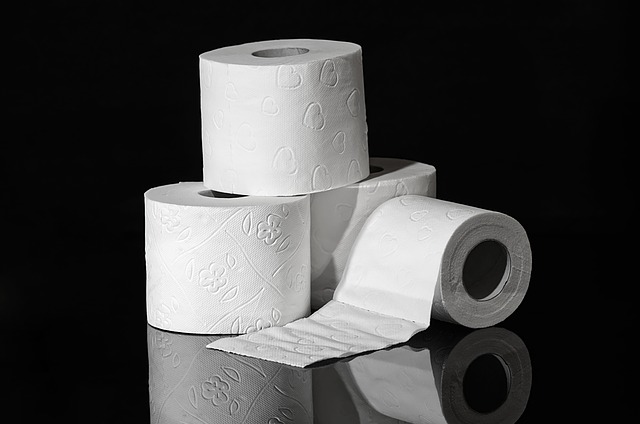

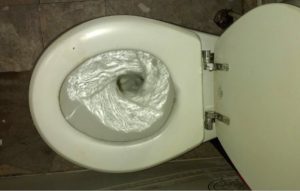
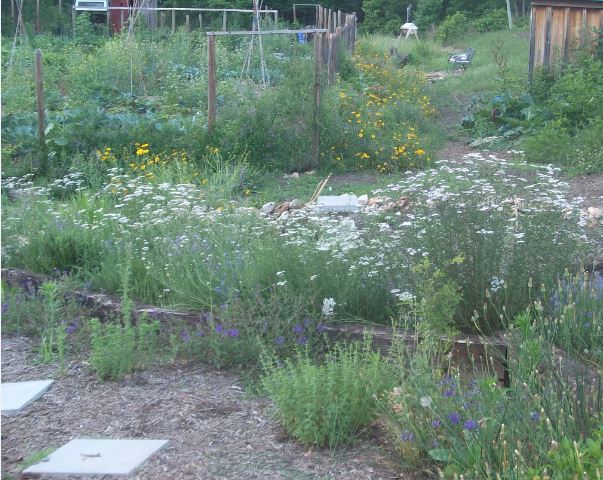







COMMENTS(8)
This was awesome! Hilarious and informative. As soon as I read, “Better yet, why not just quit pooping,” I knew this was going to be a good one. I’ve actually been thinking about this topic lately, so it was nice to get some more information. Thanks Tasha. (I wish I could add a poop emoji.)
Scott – What would a poop emoji look like exactly? Trying to imagine… Go get your bucket. I’ve been using mine often. We can swap notes a few months from now! Thanks for reading. Tasha
Yes, I have a direct experience with composting poop. I lived off grid on the Big Island back in 1995. My boyfriend was an avid gardener and crazy about compost. I pooped into a 5 gallon bucket; he preferred to dig a hole out on the old lava and squat- I did always wonder why there were planted tomatoes all over the lava field! Anyway, once 40 buckets were filled (we used albizia leaves to cover) he would start his massive pile. He worked 4-5 days, in the blazing sun, butt naked except for a loose fitting shirt and slippers, and built a mound that was 20 feet long, 6 feet wide and 4-5 feet tall. Amazing. That was astonishing to me, and certainly since there wasn’t any ‘soil’ to speak of on the crushed lava, all of it was created by whomever came and left their ‘contribution’. Literally, we SHIT HIS SOIL. Everyone ate organically, no drugs, no chemicals of any types did we use on ourselves, the property or food. Clean clean clean! He would fertilize the fruit trees and shrubs. I miss having that opportunity to utilize my excrement in this way, buy plan to begin again soon. It isn’t duplicatable for many of the urban dwellers that read this post, but for those of us in the country, PLEASE GO FOR IT! I fondly remember looking out over the lava field while contemplating the universe on my royal throne!
Leslie – What an incredible experience! And thank you for all the visuals! Like going in the garden of Eden! I bet you guys could have harnessed methane from that too (like a Jean Pain mound).
For all those people wondering how to grow food in rocky soil (e.g. Scott Sexton who commented above), here’s your answer! A giant pile of humanure makes all things possible!
Giant piles are not so easy in urban settings, but I’ve been using bokashi for cat poop. I think that paired with vermicomposting might be a workable apartment alternative.
Thanks again Leslie for the fantastic story of natural living at its best! Tasha
Extremely interesting! Certainly a reasonable thing to do but doo!?! Why not, I cultivate everyone else’s! The book mentioned is in its 5th release and no longer free. In fact, it’s $25 on Amazon! Sure wish I had seen this before the new release was ready.
Hey Lexie – I don’t know how long this will work, but it looks like you can still access the book for free chapter by chapter. Here’s the first link: http://humanurehandbook.com/downloads/Chapter_1.pdf
Change the chapter # to get to the next link. Also, there’s a $10 ebook version of an older edition if you want to read it all together.
Hope that helps you do the doo and cultivate your own poo too! Tasha
Very interesting. We do not eat 100% clean, and while we take no rx meds, we do occasionally use otc meds. My primary concern would be illnesses that don’t show symptoms or only mild symptoms that one would tend to dismiss.
I collect the evidence with a loooonnnnng-handle slotted scoop and store it in a covered 5-gallon bucket for over 6 months. I have almost 6 buckets full and it will be time to concoct some Terra Preta. I now sprinkle some crushed biochar after every deposit since I have a method of producing it. Unlike retort/drum/open pit/Kontiki methods, this is continuous albeit slow and can be stopped within 10 minutes. I have posted a video at https://youtu.be/6AsrNh5hwj8 with further details in the description. Humanure, urine, ALL-B compost, ARS-C biochar and crushed clay pottery. I think I have all the ingredients in place for the new raised garden bed.